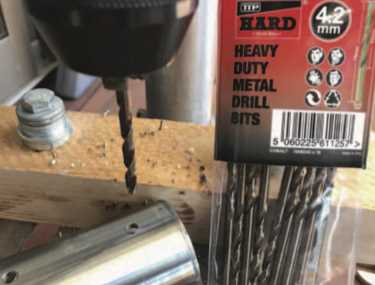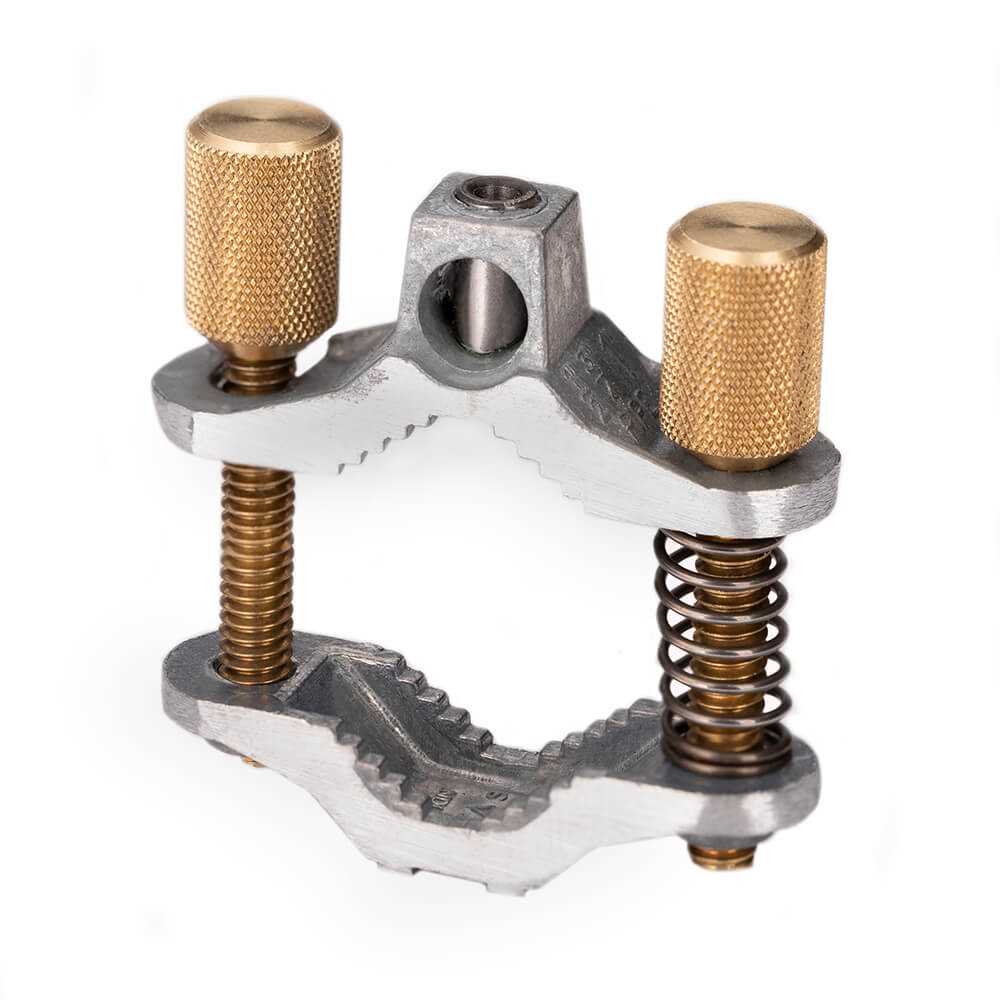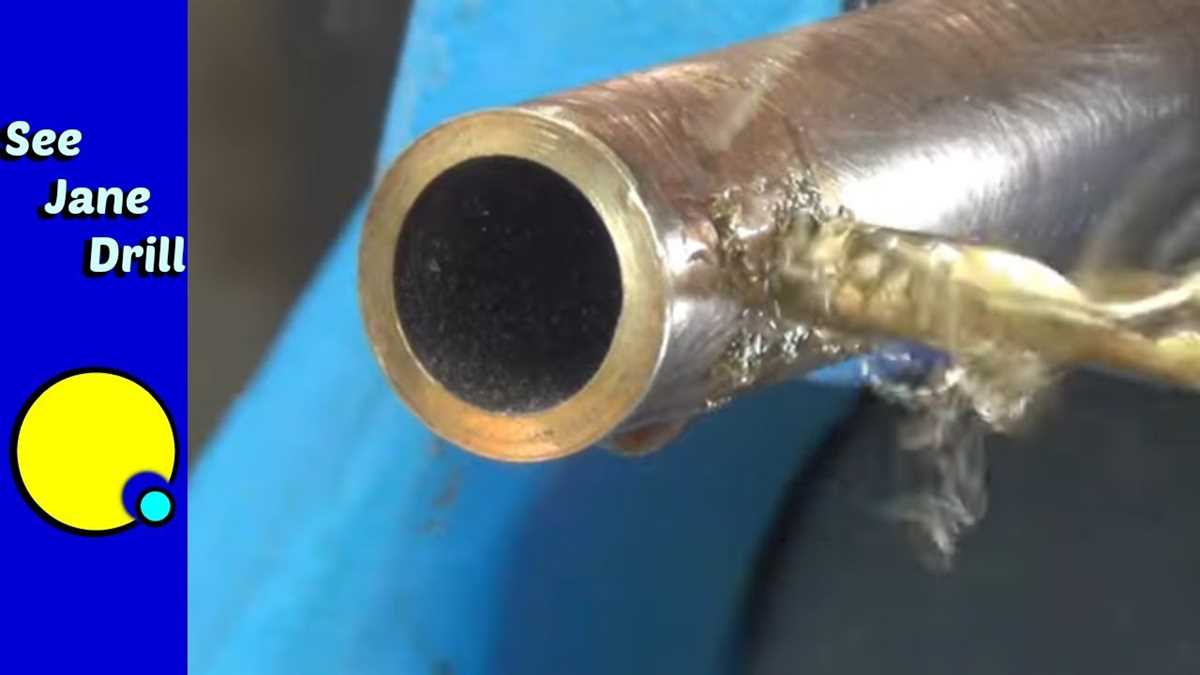Step-by-Step Guide: How to Drill Stainless Steel Tube

Drilling stainless steel tube can be a challenging task if you don’t have the right tools and techniques. Whether you’re working on a DIY project or a professional job, drilling through stainless steel requires special attention and care. In this step-by-step guide, we will walk you through the process of drilling stainless steel tube and provide you with valuable tips to ensure success.
Step 1: Gather the necessary tools and materials
Before you start drilling, it’s important to gather all the necessary tools and materials. You will need a high-quality drill bit specifically designed for stainless steel, a drill press or a handheld drill, cutting fluid or lubricant, safety goggles, and a clamp or vise to secure the stainless steel tube. Additionally, make sure you have measured and marked the drilling location on the tube.
Step 2: Choose the right drill bit
Drilling through stainless steel requires a drill bit that is capable of cutting through this tough material. Typically, a cobalt or carbide drill bit is recommended for drilling stainless steel. These drill bits are made from high-speed steel with added cobalt or carbide for increased strength and durability. Make sure to select a drill bit that matches the diameter of the hole you want to drill.
Step 3: Secure the stainless steel tube
To create clean and precise holes, it’s important to secure the stainless steel tube using a clamp or vise. This will prevent the tube from moving or vibrating during the drilling process. Make sure to position the tube in a way that allows easy access to the drilling location.
Step 4: Apply cutting fluid or lubricant
Drilling through stainless steel can generate a lot of heat and friction, which can damage the drill bit and the tube. To prevent this, apply a generous amount of cutting fluid or lubricant to the drilling location. This will help dissipate the heat and reduce the friction, making the drilling process smoother and more efficient.
Pro tip: Use a slow speed and firm pressure when drilling stainless steel. This will help prevent the drill bit from overheating and breaking, and will also help create clean and accurate holes.
Step 5: Start drilling
Once everything is in place, it’s time to start drilling. If you’re using a drill press, set the speed to a slower setting and adjust the feed rate accordingly. If you’re using a handheld drill, make sure to use a controlled and steady motion. Apply consistent pressure to the drill, but avoid using excessive force as this can cause the drill bit to break or the tube to deform.
Step 6: Clean and deburr the hole
After drilling the hole, it’s important to clean and deburr the edges. Use a file or sandpaper to remove any burrs or sharp edges around the hole. This will ensure a smooth and finished look.
Following these steps will help you successfully drill stainless steel tube. Remember to work slowly and safely, and always wear appropriate protective gear. With the right tools and techniques, you can achieve clean and precise holes in stainless steel tube for your various projects.
Choose the Right Drill Bit

When drilling stainless steel tube, it is important to choose the right drill bit for the job. Using the wrong drill bit can result in ineffective drilling, damaged material, or even injury. Here are some factors to consider when selecting a drill bit for stainless steel tube:
- Material: Look for a drill bit specifically designed for drilling stainless steel. These drill bits are usually made of high-speed steel or cobalt, which can withstand the hardness and heat generated when drilling through stainless steel.
- Size: Choose a drill bit size that matches the diameter of the hole you need to drill in the stainless steel tube. Make sure to measure carefully before selecting the drill bit size.
- Taper or straight shank: Drill bits with a straight shank are ideal for use with a drill press or hand drill. On the other hand, drill bits with a tapered shank are designed for use with a hammer drill or impact driver.
- Coating: Consider selecting a drill bit with a titanium or cobalt coating. These coatings reduce friction and heat buildup, which can help extend the life of the drill bit and improve drilling efficiency.
It is also important to use the proper drilling technique when working with stainless steel tube. Apply steady, even pressure and allow the drill bit to do the work. Using excessive force or high speeds can damage the material or the drill bit itself.
| Drill Bit Type | Pros | Cons |
|---|---|---|
| High-Speed Steel |
|
|
| Cobalt |
|
|
By choosing the right drill bit for drilling stainless steel tube and using the proper technique, you can achieve clean and efficient drilling results without damaging the material or the drill bit.
Prepare the Stainless Steel Tube
Before you start drilling the stainless steel tube, it’s important to properly prepare it to ensure a clean and accurate hole. Here are the steps to prepare the stainless steel tube:
- Measure and Mark: Use a measuring tape to measure and mark the location where you want to drill the hole on the stainless steel tube. Make sure the markings are precise and clearly visible.
- Secure the Tube: Place the stainless steel tube securely in a vise or clamp to prevent it from moving during drilling. Ensure that the tube is held firmly and does not wobble.
- Clean the Surface: Use a degreaser or isopropyl alcohol to clean the surface of the stainless steel tube where you will be drilling the hole. This will remove any dirt, oil, or contaminants that could affect the drilling process.
- Apply Lubricant: Apply a small amount of cutting oil or lubricant to the area where you will be drilling the hole. This will help to reduce friction and heat during the drilling process, prolonging the life of the drill bit and ensuring a smoother operation.
By following these steps to prepare the stainless steel tube, you will be ready to proceed with drilling. Taking the time to properly prepare the tube will help to ensure accurate and clean holes without damaging the material.
Secure the Tube in a Vice
Before drilling into the stainless steel tube, it is important to secure it in a vice to prevent any movement or slipping during the drilling process. This will ensure accurate and precise drilling.
Here are the steps to securely clamp the tube in a vice:
- Choose an appropriate vice that can accommodate the size and shape of the stainless steel tube.
- Make sure the vice is securely mounted on a stable workbench or surface.
- Open the vice jaws wide enough to fit the tube without causing any deformation or damage.
- Place the stainless steel tube between the vice jaws, ensuring that it is properly aligned and straight.
- Tighten the vice jaws securely, but be careful not to overtighten and crush the tube.
Once the tube is securely clamped in the vice, you are ready to proceed with drilling. The vice will provide stability and support, making it easier to drill into the stainless steel tube without any unnecessary movements or vibrations.
Mark the Drilling Point
Before you begin drilling the stainless steel tube, it is important to mark the exact spot where you want to drill. This will ensure precision and accuracy in drilling the hole.
Here are the steps to mark the drilling point:
- Clean the surface of the stainless steel tube where you plan to drill. Use a cleaning solution or rubbing alcohol to remove any dirt, dust, or grease.
- Measure and mark the exact spot where you want to drill using a permanent marker or a scribe tool. Double-check your measurements to ensure accuracy.
- If you are drilling multiple holes in a straight line, use a measuring tape or ruler to ensure equal spacing between each hole.
- Consider using a center punch to create a small indentation at the marked spot. This will help prevent the drill bit from slipping and ensure accurate drilling.
- Double-check your markings to make sure they are clear and visible before proceeding with drilling.
By following these steps and marking the drilling point accurately, you can ensure that your drilling process goes smoothly and produces the desired results.
Start with a Pilot Hole
When drilling stainless steel tube, it is important to start with a pilot hole. A pilot hole is a smaller hole that acts as a guide for the larger drill bit. This helps to ensure accuracy and prevent the drill bit from slipping or wandering off course.
To create a pilot hole, follow these steps:
- Mark the spot where you want to drill the hole on the stainless steel tube using a marker or a center punch.
- Select a drill bit that is slightly smaller in diameter than the desired hole size. This will depend on the size and thickness of the stainless steel tube.
- Secure the stainless steel tube firmly in a bench vise or a drill press to keep it stable during drilling.
- Put on safety goggles and gloves to protect yourself from any metal debris or sharp edges.
- Position the drill bit on the marked spot and apply moderate pressure to start drilling. Make sure the drill bit is perpendicular to the surface of the stainless steel tube.
- Drill slowly and steadily, applying consistent pressure. Use a lubricant such as cutting oil or water to reduce friction and heat buildup.
- Continue drilling until the pilot hole is complete.
- Inspect the pilot hole to ensure it is straight and centered. If necessary, make any adjustments before proceeding to drill the larger hole.
Once the pilot hole is done, you can proceed to drill the larger hole using a drill bit of the desired size. Remember to increase the pressure gradually and use cutting oil or water as a lubricant to ensure a smooth drilling process.
Drill the Stainless Steel Tube

Now that you have all the necessary tools and safety equipment, it’s time to drill the stainless steel tube. Follow these steps to ensure a safe and successful drilling process:
Step 1: Mark the drilling point

Use a marker or a punch tool to mark the exact point on the stainless steel tube where you want to drill the hole.
Step 2: Secure the tube
Place the stainless steel tube in a vise or secure it in another appropriate holding tool. Make sure that the tube is securely fixed in place to prevent any movement during drilling.
Step 3: Choose the right drill bit
Select a high-quality drill bit that is specifically designed for drilling through stainless steel. The drill bit should be made of cobalt or carbide, as they are known for their hardness and durability.
Step 4: Apply cutting fluid

Apply a generous amount of cutting fluid to the area where you will be drilling. This will help to lubricate the drill bit and reduce the heat generated during drilling, which can cause damage to the stainless steel.
Step 5: Start drilling
Position the drill bit at the marked point on the stainless steel tube. Start drilling at a slow speed and gradually increase the speed as the hole begins to form. Apply steady pressure without pushing too hard, as this can cause the drill bit to break or damage the tube.
Step 6: Remove the debris
While drilling, the cutting fluid will help to flush away the metal shavings. However, it is important to periodically stop drilling and clean out the debris from the hole. This will prevent the drill bit from getting clogged and ensure a smooth drilling process.
Step 7: Check the hole
Once you have finished drilling, inspect the hole to ensure that it is clean and smooth. If necessary, use a deburring tool to remove any sharp edges or burrs.
Step 8: Repeat if needed
If you need to drill additional holes in the stainless steel tube, repeat the above steps for each hole.
Following these step-by-step instructions will help you drill through stainless steel tube safely and efficiently. Remember to always wear safety goggles and gloves, and take breaks as needed to prevent overheating of the drill bit and the stainless steel tube. Happy drilling!
Take Breaks to Cool the Drill Bit
Drilling stainless steel tube can generate a lot of heat, which can quickly dull the drill bit or even cause it to break. To prevent this, it’s important to take breaks while drilling to allow the drill bit to cool down. This will help prolong the life of the drill bit and ensure that it remains sharp and effective.
During these breaks, you can take the opportunity to inspect the drill bit for any signs of wear or damage. If you notice any dullness or chipping, it may be time to replace the drill bit with a fresh one. Using a dull or damaged drill bit can result in poor drilling performance and can also increase the risk of accidents.
While the drill bit is cooling down, you can also take a moment to clear away any metal shavings or debris that may have accumulated. This will help prevent the drill bit from becoming clogged and will ensure smooth and efficient drilling.
Taking breaks to cool the drill bit is especially important when drilling larger holes or thicker stainless steel tube. The increased resistance and heat generated can put more strain on the drill bit, so allowing it to cool down periodically is essential.
Overall, taking breaks to cool the drill bit is a simple yet effective step that can greatly improve the drilling process when working with stainless steel tube. By allowing the drill bit to cool down and inspecting it for wear, you can ensure better drilling performance and prolong the life of your drill bits.
Deburr the Hole
After drilling the hole in the stainless steel tube, it is important to deburr the edges to remove any sharp or rough spots. Deburring is necessary to ensure a clean and smooth hole, which will prevent any potential injuries or damage to other components.
Here are the steps to deburr the hole in a stainless steel tube:
- Inspect the hole: Take a close look at the drilled hole to identify any burrs or rough edges that need to be removed.
- Choose the right tool: Select a deburring tool that is suitable for stainless steel. There are various deburring tools available, including manual deburring tools, deburring blades, deburring brushes, or deburring machines. Choose the tool based on the size and type of burr.
- Prepare the deburring tool: If using a manual deburring tool or blade, make sure it is sharp and clean. If using a brush or machine, ensure that the appropriate brush or disc is attached.
- Deburr the hole: Use the deburring tool to remove the burrs by gently applying pressure and running it along the edges of the hole. Be careful not to apply too much pressure, as it could damage the tube or create more burrs.
- Inspect the hole again: After deburring, inspect the hole to ensure that all the burrs have been removed and the edges are smooth. Run your finger along the hole to feel for any rough spots.
Deburring the hole in a stainless steel tube is an essential step to ensure the safety and functionality of the drilled hole. By removing any sharp or rough edges, you can prevent injuries and ensure a professional finish.
FAQ:
What are the necessary tools and materials to drill stainless steel tube?
The necessary tools and materials to drill stainless steel tube include a drill press, a drill bit suitable for drilling stainless steel, cutting oil, clamps or a vise to secure the tube, and safety goggles.
Is it necessary to use a drill press to drill stainless steel tube?
While it is not absolutely necessary to use a drill press, it is highly recommended. A drill press provides better stability and control, which is crucial when drilling stainless steel, especially if you are using a larger drill bit.
What type of drill bit should I use for drilling stainless steel tube?
For drilling stainless steel, it is recommended to use a cobalt or carbide drill bit. These types of drill bits are specifically designed to withstand the hardness of stainless steel and provide better results.
Should I use cutting oil when drilling stainless steel tube?
Yes, using cutting oil is highly recommended when drilling stainless steel tube. Cutting oil helps to lubricate the drill bit, reduce heat and friction, and prolong the life of the drill bit. It also helps to prevent the drill bit from getting stuck or breaking.
How can I secure the stainless steel tube while drilling?
You can secure the stainless steel tube by using clamps or a vise. Place the tube between the clamps or in the vise, making sure it is held firmly in place. This will prevent the tube from moving or spinning while drilling.
What safety precautions should I take when drilling stainless steel tube?
When drilling stainless steel tube, it is important to wear safety goggles to protect your eyes from flying metal chips. It is also recommended to wear gloves to protect your hands and ensure a firm grip on the drill. Additionally, make sure to work in a well-ventilated area or use a mask to avoid inhaling any harmful metal dust.
Video:











